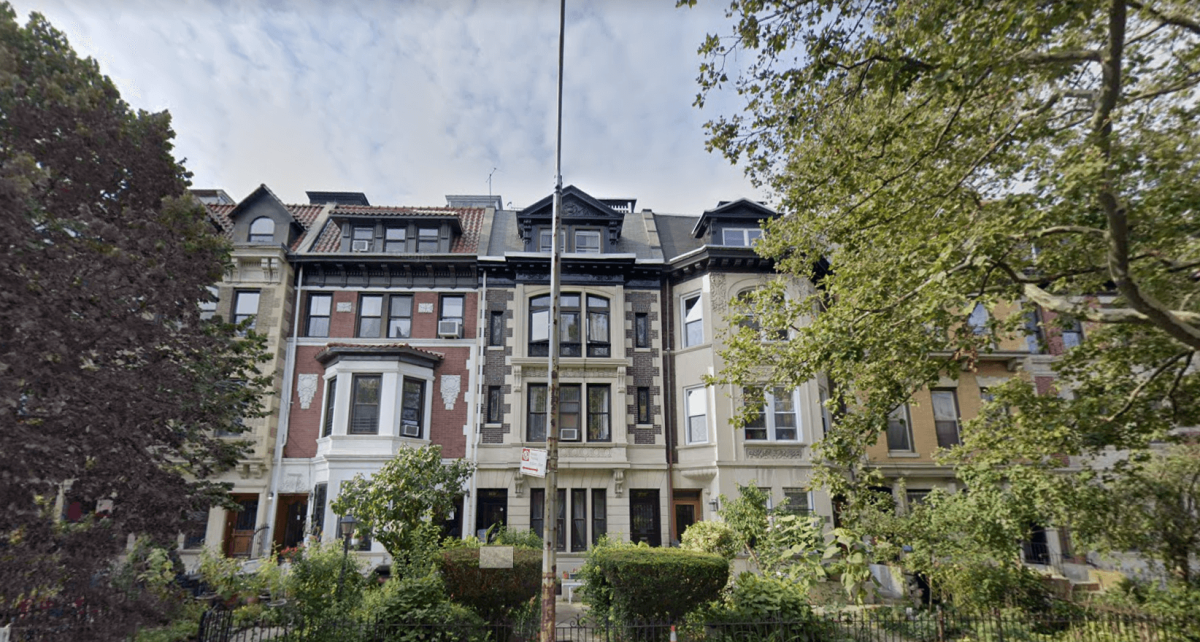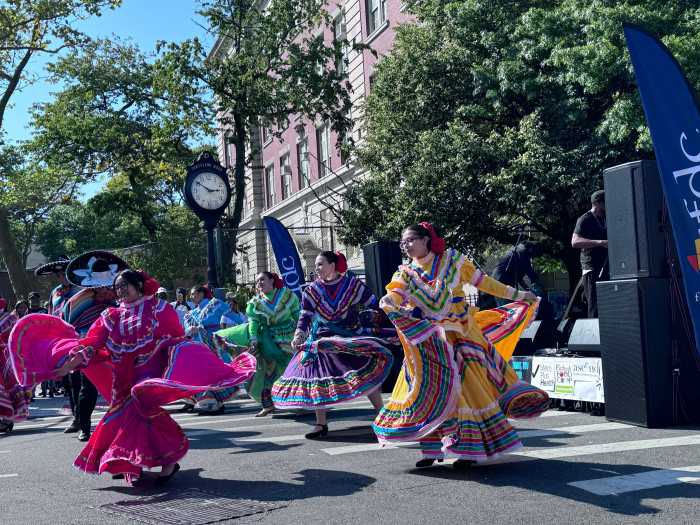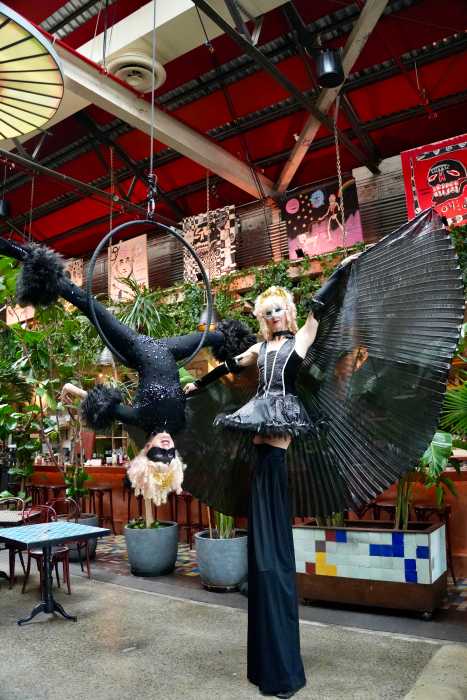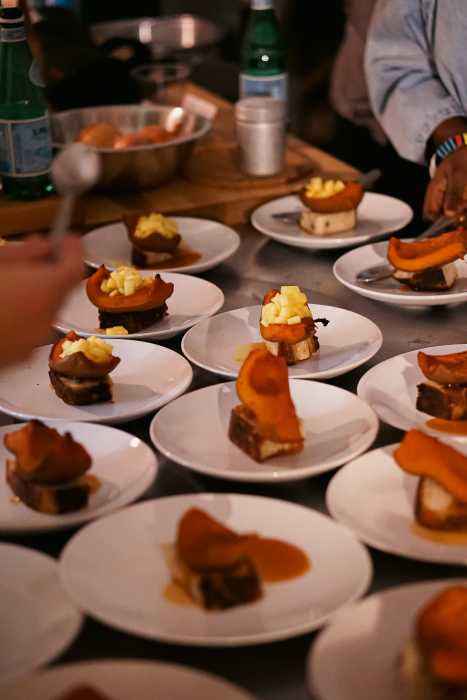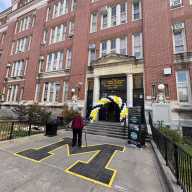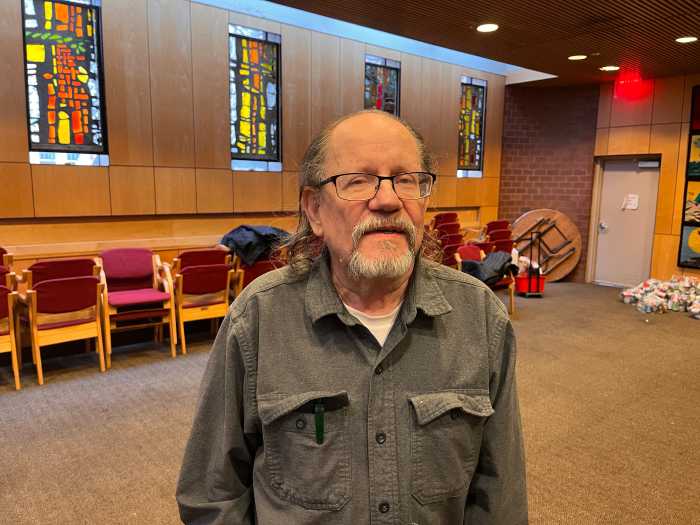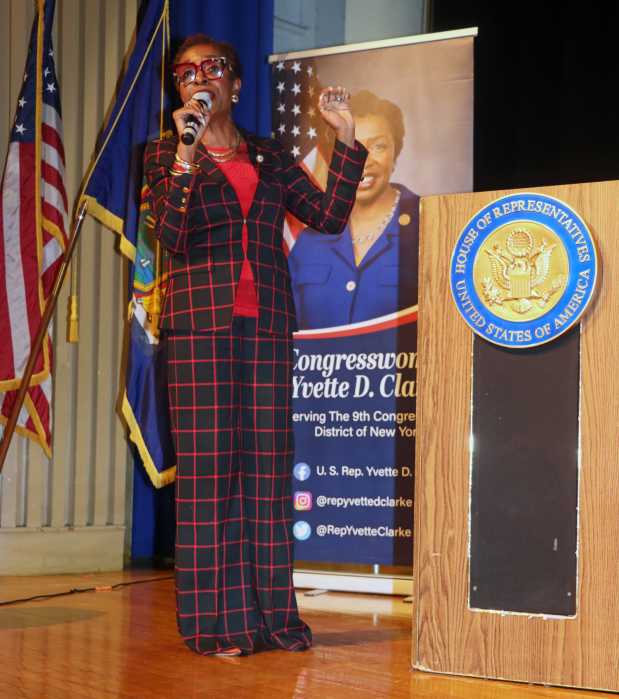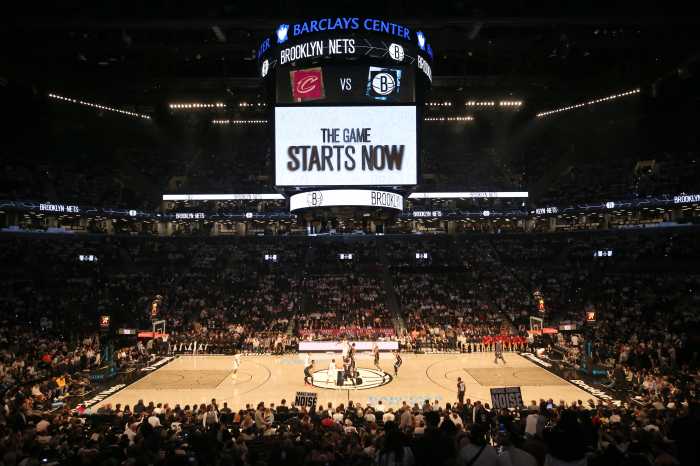The city’s Landmarks Preservation Commission this month calendared the Melrose Parkside Historic District to be considered for a landmark designation after the commission’s board voted entirely in favor of preserving the section of Flatbush known for its well-maintained “Kinko” homes.
“The proposed Melrose Parkside Historic District is a remarkably cohesive and intact group of 38 single and two-family duplex rowhouses,” said Kate Lemos McHale, the commission’s director of research, at the Aug. 9 meeting. “The property owners have maintained the houses here very sensitively and as a result, the district has a very intact historic character.”
Kinko Houses and the preservation of the neighborhood
The Melrose Parkside Historic District comprises 38 single and two-family row houses on Parkside Avenue between Flatbush and Bedford avenues. The homes were all built between 1909 and 1915 by two well-known architects Benjamin Driesler and Axel S. Headman.
The landmark designation would protect all buildings within the boundaries of the historic district from potential destruction and future development by making it so that the LPC must approve of any alteration, reconstruction demolition or new construction affecting the designated buildings.
Driesler and Headman were commissioned by developers William A. A. Brown and Eli H. Bishop and Son, and the homes they built represent the architects’ use of Neo-classical techniques to create a cohesive sense of place across three different types of housing, according to the commission. The 20 two-family homes within the proposed historic district are built in the duplex style coined “Kinko,” which originated in Brooklyn and refers to two separate two-story houses that were marketed to provide better privacy than the common two-family homes at the time.
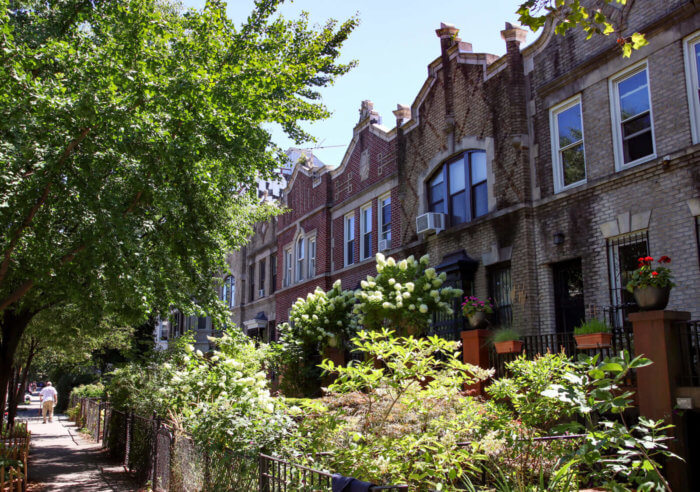
“Designed as an alternative to the conventional two-family house, the two-family duplex houses were designed to offer greater privacy,” McHale said. “Originated in Brooklyn in 1905 as the Kings of Chester Land Company and marketed as Kinko Houses.”
When conducting a study on the property, the commission’s research department found that the homes within the boundaries of the proposed historic district have been well-preserved, with a high level of integrity and architectural design not commonly seen in other central Brooklyn neighborhoods.
“The in-depth study found that the proposed district stood out within the neighborhood for its highly-intact architectural quality,” McHale said, “and in particular for the group of Kinko House duplexes with their artistically designed facades which we consider among the finest representations of the type in Brooklyn.”
The Melrose-Parkside Historic District is named respective of the history that has made this area special starting in 1883 when Dr. Homer Bartlett purchased Manor Hall, an 18th-century manor house located between Parkside Avenue and what was Melrose Park, and proposed the creation of a suburban development in the space he planned to name Melrose Park that never came to fruition, according to the board’s research director. He eventually sold most of the property to the rich brewer and speculator William Brown in 1886. Brown’s son ended up transforming the property after his father died in 1905.
When Robinson Street finally opened in 1908 William Arthur Alexander Brown petitioned for the roadway to be renamed to Parkside Avenue, citing its proximity to Prospect Parks and Ocean Parkway, according to McHale.
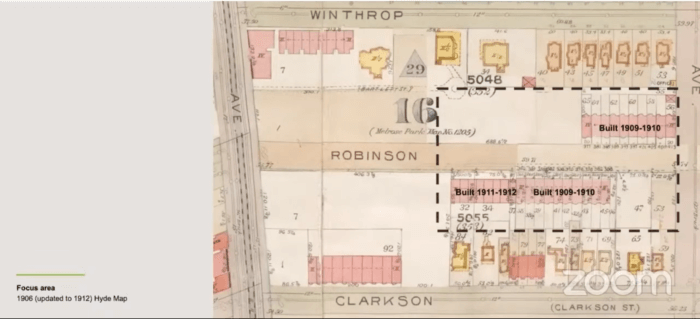
Driesler completed two rows of his two-family “Kinko” houses by 1910 and was building a row of single-family no basement homes that he completed in 1912.
Brown began his venture with duplex homes in 1909, at the peak of their popularity, describing them as “the most perfect houses ever built for two families with the privacy of a one-family house.” The homes were described in the Brooklyn Eagle at the time as “the latest type of modern house building.”
When the popularity of duplexes began to decline — mostly due to their costly construction – in 1912, Brown commissioned Driesler to design a row of eight single-family houses that he advertised as “easy house-keeping, no-basement houses.” They were designed with deep open area ways, McHale said, and the row has full width terraces and shorter stoops and is melded with classical design elements with Jacobian-style gables.
Brown announced his retirement in 1912 to focus on his brewery business, and sold the northern portion of the property that had yet to be developed, as stated in the presentation, to Eli H. Bishop and Son in late 1913 so they could build 10 single-family homes.
The neo-classical style homes were designed by Axel Headman in 1914 and were completed in 1915. The “American basement plan” houses at 357 to 375 Parkside Avenue are outfitted with bowed fronts, prominent entrances situated next to a service entrance and front window.
Demographic shifts in the Melrose Parkside Historic District
With early advertising for the area as exclusive, the early homeowners were exclusively white and predominantly born in the United States through the 1950s.
In the 1920s, some homeowners hopped on the bandwagon of a growing trend in the city and started taking in boarders and roomers to share their large apartments with them, which then led to the 1930s when a large number of the homed were being chopped up into multiple residential apartments and in-home offices for doctors, according to McHale.

And then by the mid-19th Century, Flatbush became home to a growing population of African-American and Afro-Caribbean residents who were moving from other nabes in the city like Central Harlem and Bedford-Stuyvesant. The neighborhood soon became the center of the Big Apple’s Afro-Caribbean community and by the 1980s became a major destination for migrants from islands in the Caribbean.
The commission had previously designated a block of row homes on E. 25th Street in East Flatbush as a historic district. Sarah Carroll, the LPC’s chair, at the time celebrated the nabe’s “community spirit” and efforts to maintain the beauty and history of the homes there.
A public hearing will be scheduled on Melrose Parkside Historic District’s distinction in the early fall, according to the commission.


